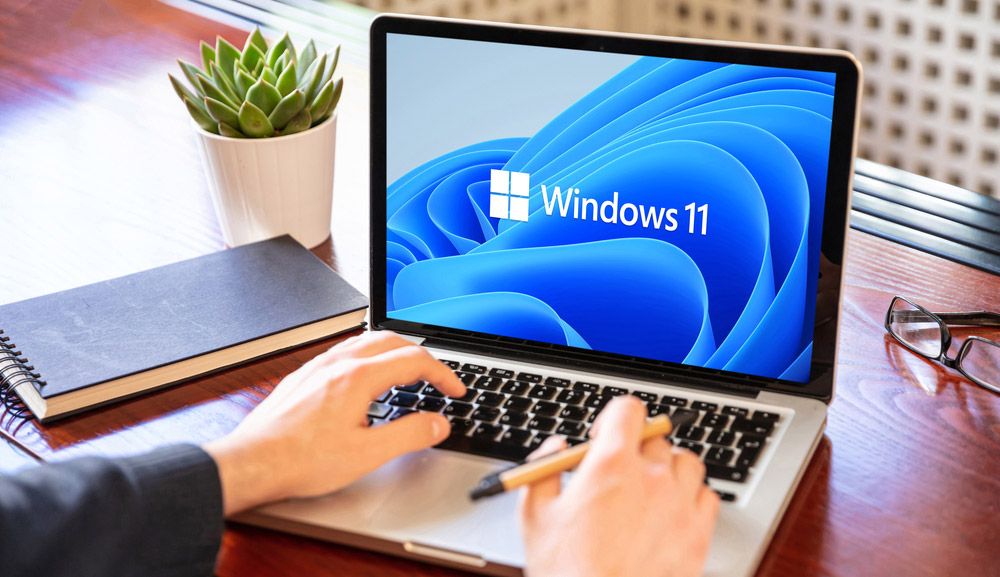
Windows 10 has been a popular operating system since its release in 2015, with over 1 billion devices currently running on it. With such a large user base, it is crucial for Microsoft to continuously update and improve the security of the system. This is where KB5028185 comes in – the latest security update for Windows 10, version 22H2. In this blog post, we will explore the details of KB5028185 and how it enhances the protection of Windows 10 devices.
Exploring KB5028185: Unveiling Enhanced Protection Measures for Windows 10
KB5028185 is a cumulative security update that was released by Microsoft on October 12, 2021. It is available for all versions of Windows 10, including Home, Pro, Enterprise, and Education. The update addresses several vulnerabilities in the operating system and adds new security features to better protect users’ devices.
What is a Cumulative Update?
Before we dive into the specifics of KB5028185, let’s first understand what a cumulative update is. A cumulative update is a single package that contains all the previously released updates for a specific version of an operating system. This means that when you install a cumulative update, you are also installing all the previous updates that you may have missed. This helps to keep your system up-to-date and secure.
Addressing Critical Vulnerabilities
One of the main purposes of KB5028185 is to address critical vulnerabilities in Windows 10. These vulnerabilities could potentially allow attackers to gain access to sensitive information or take control of a device. By fixing these vulnerabilities, Microsoft is ensuring that Windows 10 remains a secure operating system for its users.
The update addresses a total of 66 vulnerabilities, with 13 of them being rated as critical and 53 as important. These vulnerabilities affect various components of Windows 10, including the operating system itself, Microsoft Edge, Internet Explorer, and more. Some of the critical vulnerabilities that are addressed by KB5028185 include remote code execution, elevation of privilege, and information disclosure.
Beefing up Windows 10 Security
In addition to addressing vulnerabilities, KB5028185 also adds new security features to Windows 10. These features are designed to enhance the overall security of the operating system and protect users’ devices from potential threats.
One of the key security features introduced by KB5028185 is the ability to block unsigned scripts in Microsoft Edge. This means that any malicious scripts that are not digitally signed will be blocked from running in the browser, preventing potential attacks. Another important feature is the addition of a new Group Policy setting that allows administrators to disable the use of NTLMv1 authentication. This helps to prevent attackers from exploiting this outdated authentication protocol.
Windows 10 Gets a Security Boost: Delving into KB5028185 and Its Protective Updates
Now that we have a general understanding of what KB5028185 is and what it aims to achieve, let’s take a closer look at some of the specific updates and improvements that it brings to Windows 10.
Enhanced Protection Against Malware and Ransomware
Malware and ransomware are two of the biggest threats to computer systems, and they can cause significant damage if left unchecked. With KB5028185, Microsoft has introduced new security measures to better protect Windows 10 devices against these types of attacks.
One of the updates included in KB5028185 is the addition of a new feature called “Tamper Protection” for Microsoft Defender Antivirus. This feature helps to prevent malicious actors from tampering with the antivirus settings or disabling it altogether. It also adds new protections against fileless malware, which is a type of malware that does not leave any traces on the system.
Another important update is the addition of a new feature called “Ransomware Data Recovery” for OneDrive. This feature allows users to recover their files from OneDrive if they become encrypted by ransomware. It works by creating a backup of important files in OneDrive, which can then be restored in case of a ransomware attack.
Improvements to Windows Hello
Windows Hello is a biometric authentication feature that allows users to log into their devices using facial recognition or fingerprint scanning. With KB5028185, Microsoft has made some improvements to this feature to make it more secure and reliable.
One of the updates included in KB5028185 is the ability to use Windows Hello for Business in remote desktop sessions. This means that users can now use Windows Hello to log into their remote desktop sessions, making the process more convenient and secure. Additionally, Microsoft has also improved the accuracy of facial recognition for Windows Hello, making it more difficult for someone to spoof the system with a photo or video.
KB5028185: Unpacking the Latest Security Enhancements for Windows 10 (Version 22H2)
KB5028185 is not just about addressing vulnerabilities and adding new security features, it also includes several other updates and improvements that aim to enhance the overall user experience of Windows 10.
Improvements to Microsoft Edge
Microsoft Edge is the default web browser for Windows 10, and with KB5028185, it receives some notable updates and improvements. One of the most significant updates is the addition of a new feature called “Tab Groups”. This feature allows users to organize their open tabs into groups, making it easier to manage multiple tabs at once.
Another important update is the addition of a new feature called “Startup Boost”. This feature helps to improve the startup time of Microsoft Edge by preloading certain components when the browser is launched. This results in a faster and more responsive browsing experience for users.
Updates to the Windows Subsystem for Linux (WSL)
The Windows Subsystem for Linux (WSL) is a compatibility layer that allows users to run Linux applications on Windows 10. With KB5028185, Microsoft has made some updates and improvements to WSL, making it easier for developers to work with Linux applications on Windows 10.
One of the updates included in KB5028185 is the ability to access Linux files from File Explorer. This means that users can now easily browse and manage their Linux files using the familiar File Explorer interface. Additionally, Microsoft has also improved the performance of WSL, resulting in faster launch times for Linux applications.
Unveiling KB5028185: A Comprehensive Analysis of Windows 10’s Newest Security Update
Now that we have explored the various updates and improvements included in KB5028185, let’s take a closer look at some of the technical details of the update.
Patching Vulnerabilities in Windows Kernel
The Windows kernel is the core component of the operating system, responsible for managing memory, processes, and hardware devices. It is also a common target for attackers looking to exploit vulnerabilities in the operating system. With KB5028185, Microsoft has patched several vulnerabilities in the Windows kernel, making it more secure and less vulnerable to attacks.
One of the critical vulnerabilities addressed by KB5028185 is a remote code execution vulnerability in the Windows kernel. This vulnerability could allow an attacker to execute arbitrary code on a targeted system, potentially gaining full control over it. By patching this vulnerability, Microsoft has significantly reduced the risk of such attacks.
Improving Network Security
Network security is crucial for any operating system, and with KB5028185, Microsoft has made some important updates and improvements in this area. One of the updates included in the update is the addition of support for the Encrypted DNS protocol, which helps to protect users’ DNS queries from being intercepted or modified.
Another important update is the addition of a new feature called “DNS over HTTPS (DoH) for Enterprise”. This feature allows organizations to configure their devices to use DoH for DNS resolution, providing an additional layer of security for their network traffic. Additionally, Microsoft has also improved the performance of the Windows Firewall, resulting in faster and more efficient network protection.
KB5028185: Decoding the Technicalities of Enhanced Windows 10 Security Measures
While most users may not be interested in the technical details of KB5028185, it is still worth taking a closer look at some of the technical aspects of the update to understand its impact on the operating system.
Improving Memory Management
Memory management is an essential aspect of any operating system, and with KB5028185, Microsoft has made some improvements in this area. One of the updates included in the update is the addition of a new feature called “Dynamic Data Exchange (DDE) Mitigation”. This feature helps to prevent malicious actors from exploiting DDE vulnerabilities to execute arbitrary code on a targeted system.
Additionally, Microsoft has also improved the performance of the Windows memory manager, resulting in faster and more efficient memory allocation and management. This helps to improve the overall performance of the operating system and makes it less vulnerable to attacks that exploit memory-related vulnerabilities.
Enhancing Device Security
KB5028185 also includes several updates and improvements that aim to enhance the security of Windows 10 devices. One of the updates included in the update is the addition of a new feature called “Windows Defender Application Control (WDAC) Improvements”. This feature helps to prevent unauthorized applications from running on a device, making it more difficult for attackers to compromise the system.
Another important update is the addition of a new feature called “Windows Hello for Business Hybrid Key Trust”. This feature allows organizations to use a combination of on-premises and cloud-based authentication methods for Windows Hello, providing more flexibility and security for their devices.
Windows 10 Security: A Deep Dive into the Latest Patches and Improvements Introduced by KB5028185
With KB5028185, Microsoft has once again demonstrated its commitment to continuously improving the security of Windows 10. The update addresses critical vulnerabilities, adds new security features, and includes several other updates and improvements that aim to enhance the overall user experience of the operating system.
Protecting Against Zero-Day Vulnerabilities
Zero-day vulnerabilities are vulnerabilities that are not yet known to the public or the software vendor. These vulnerabilities can be particularly dangerous as attackers can exploit them before a patch is released. With KB5028185, Microsoft has addressed several zero-day vulnerabilities, making it more difficult for attackers to exploit them.
One of the zero-day vulnerabilities addressed by KB5028185 is a remote code execution vulnerability in the Windows TCP/IP stack. This vulnerability could allow an attacker to execute arbitrary code on a targeted system by sending specially crafted network packets. By patching this vulnerability, Microsoft has significantly reduced the risk of such attacks.
Improving Browser Security
As mentioned earlier, KB5028185 includes several updates and improvements for Microsoft Edge, the default web browser for Windows 10. One of the updates included in the update is the addition of a new feature called “Password Monitor”. This feature helps users to identify and change weak or compromised passwords, making it easier to protect their online accounts.
Additionally, Microsoft has also improved the security of Microsoft Edge by adding support for the Web Authentication API. This API allows websites to use biometric authentication methods, such as Windows Hello, to verify a user’s identity. This helps to prevent phishing attacks and makes it more difficult for attackers to steal sensitive information.
KB5028185: A Detailed Look at the Latest Security Enhancements for Windows 10
KB5028185 is a significant security update for Windows 10, and it includes several updates and improvements that aim to enhance the overall security of the operating system. In this section, we will take a closer look at some of the key updates and improvements included in the update.
Improving App Security
App security is crucial for any operating system, and with KB5028185, Microsoft has made some important updates and improvements in this area. One of the updates included in the update is the addition of a new feature called “Windows Defender Exploit Guard Improvements”. This feature helps to prevent attackers from exploiting vulnerabilities in applications by blocking certain types of behaviors.
Additionally, Microsoft has also improved the security of the Windows App Container, which is used to isolate applications from each other and the rest of the system. By making these improvements, Microsoft is ensuring that apps running on Windows 10 are more secure and less vulnerable to attacks.
Enhancing Data Protection
Data protection is a top priority for most users, and with KB5028185, Microsoft has made some updates and improvements to better protect users’ data. One of the updates included in the update is the addition of a new feature called “Windows Information Protection (WIP) Improvements”. This feature helps to prevent unauthorized access to sensitive data by encrypting it and restricting access to authorized users only.
Another important update is the addition of a new feature called “Windows Defender Application Control (WDAC) Improvements”. This feature helps to prevent malicious actors from executing code in protected folders, making it more difficult for them to steal or modify sensitive data.
KB5028185: Exploring the Latest Security Measures Designed to Safeguard Windows 10 Devices
With KB5028185, Microsoft has introduced several new security measures to better protect Windows 10 devices against potential threats. In this section, we will take a closer look at some of these measures and how they contribute to the overall security of the operating system.
Improving Virtualization-Based Security
Virtualization-based security is a feature in Windows 10 that uses hardware virtualization to isolate certain parts of the operating system from the rest. This helps to prevent attackers from accessing sensitive information or making changes to critical system components. With KB5028185, Microsoft has made some updates and improvements to this feature, making it more secure and reliable.
One of the updates included in the update is the addition of a new feature called “Windows Defender Credential Guard Improvements”. This feature helps to protect user credentials from being stolen by malicious actors by storing them in a secure environment. Additionally, Microsoft has also improved the performance of virtualization-based security, resulting in faster and more efficient protection for Windows 10 devices.
Enhancing Device Management
Device management is an essential aspect of any operating system, and with KB5028185, Microsoft has made some updates and improvements in this area. One of the updates included in the update is the addition of a new feature called “Windows Autopilot Improvements”. This feature helps organizations to deploy and manage Windows 10 devices more efficiently, reducing the risk of security breaches.
Another important update is the addition of a new feature called “Windows Update for Business Improvements”. This feature helps organizations to better manage and control the deployment of updates and patches, ensuring that their devices are always up-to-date and secure.
Conclusion
In conclusion, KB5028185 is a significant security update for Windows 10, version 22H2. It addresses critical vulnerabilities, adds new security features, and includes several other updates and improvements that aim to enhance the overall security and user experience of the operating system. By continuously updating and improving the security of Windows 10, Microsoft is ensuring that users can stay safe and protected while using their devices. It is highly recommended that all Windows 10 users install KB5028185 to keep their devices secure and up-to-date.










